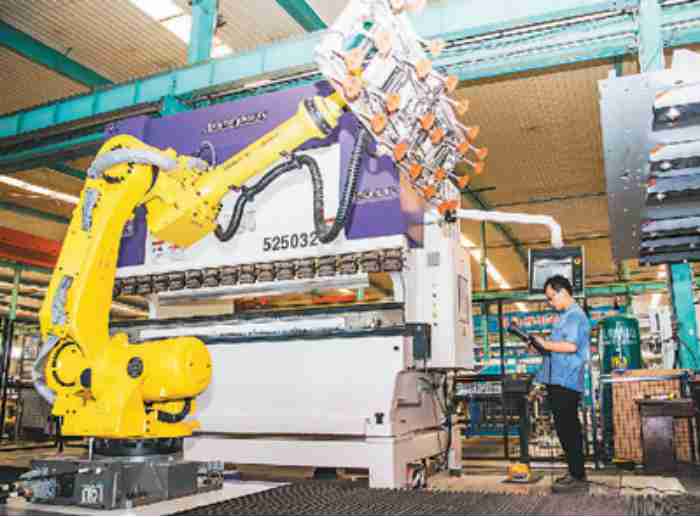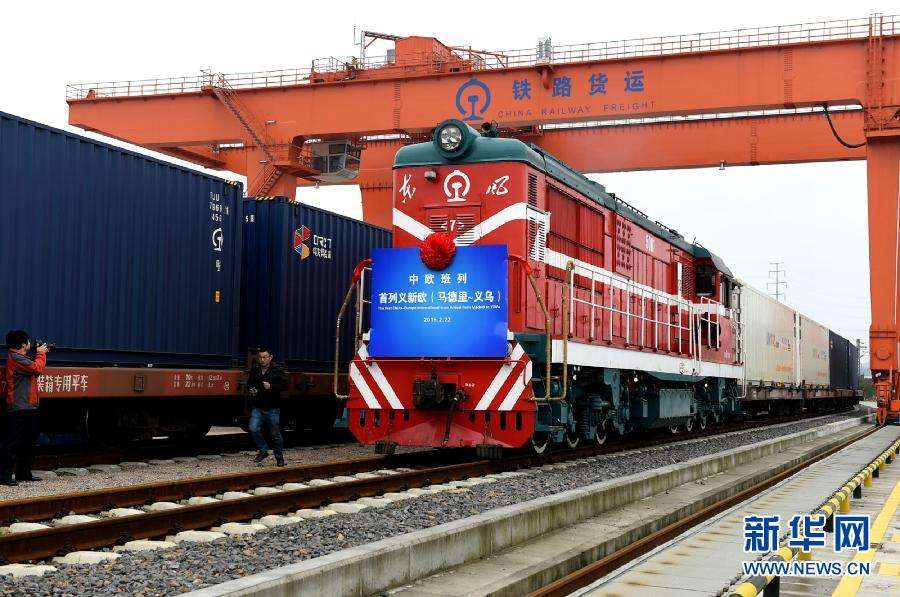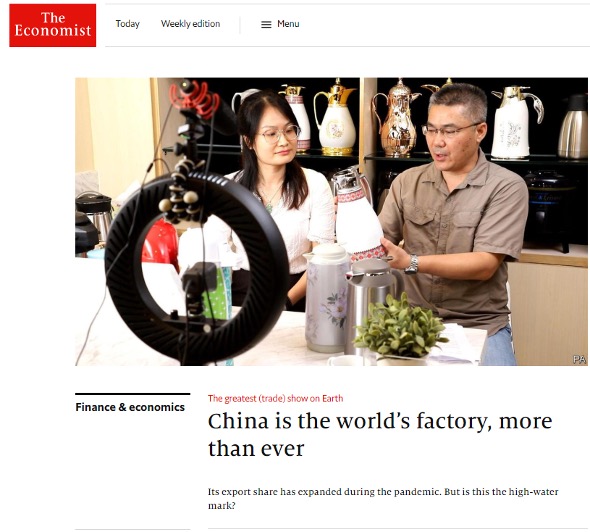(Peoples Daily Online)16:50, June 30, 2020
Profits of China’s industrial enterprises above designated size reached 582.3 billion yuan (about $82.3 billion) in May, marking a 6-percent growth year-on-year and the first positive growth of industrial profits of the country in 2020, suggested data from the National Bureau of Statistics (NBS).

An employee operates a mechanical arm for production in the workshop of a manufacturing enterprise in Qingzhou, east China’s Shandong province. (Photo by Wang Jilin/People’s Daily)
In April, the year-on-year growth rate of the profits of the country’s major industrial enterprises decreased by 4.3 percent, according to a monthly report on China’s industrial economic performance released by the NBS on June 28.
The total profits of the country’s industrial companies, with annual revenue of over 20 million yuan, stood at 1,8 trillion yuan in the first five months of the year, dropping by 19.3 percent from the same period of the previous year, disclosed the NBS.
The decline narrowed 8.1 percentage points from that of the first four months, data of the NBS indicated.
Ten of the 41 industrial sectors recorded year-on-year profit growth in the first five months of 2020, while 30 sectors saw decline in their profits, and profits of one sector were at the same level as that of the period last year, the report revealed.
Profits of computer, telecommunications and other electronic equipment manufacturing sectors rose by 34.7 percent year-on-year during the January-May period, while that of farm and sideline food processing industry and special-purpose equipment manufacturing sector grew by 19 percent and 16.6 percent respectively, according to the report.
Certain key sectors witnessed significant profit increases in May, said the report, disclosing that petroleum processing industry logged total profits of 11.6 billion yuan in May, up 8.9 percent from the same period last year, while the whole industry had suffered losses of 21.8 billion yuan in April.
Profits of the electricity sector reported a 10.9-percent growth year-on-year in May, a significant increase from the 15.7-percent decline in April, the report suggested.
As of May 27, 67.4 percent of China’s industrial enterprises above designated size had seen their production capacity reach over 80 percent of the normal levels, 6.6 percentage points more than that in late April, according to an earlier sampling survey conducted by the NBS.
The value-added industrial output of these major industrial enterprises continued to pick up in May after realizing positive growth in April, rising by 4.4 percent year on year, 0.5 percentage points higher than that of the previous month, revealed the survey.
The profit improvement in China’s industrial enterprises mainly resulted from the country’s policies designed to reduce corporate burden, including those on tax and fee cuts, said Liu Xiangdong, deputy head of the economic research department of China Center for International Economic Exchanges.
The drop in prices of imported raw bulk materials has also reduced the pressure of procurement costs for enterprises, Liu told People’s Daily.
With the gradual resumption of domestic consumer market, companies in the country accelerated inventory digestion and made efforts to promote consumer price recovery, which helped increase profits, Liu pointed out.
In addition, benefiting from the introduction of policies and measures on stabilizing domestic and foreign investment, enterprises increased their capital expenditure on investment, which has driven economic recovery and growth in returns on investment, thus leading to profit increase for industrial enterprises, according to Liu.
![]()



